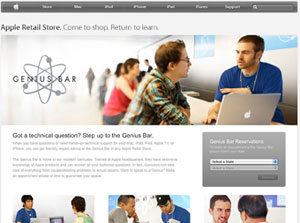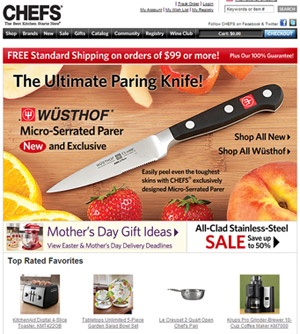The poet e.e.cummings wasn’t writing for brand leaders and merchants when he wrote this, but I’m certain there’s a lot those of us in the business world can learn from his wisdom:
“To be nobody-but-yourself — in a world which is doing its best, night and day, to make you everybody else — means to fight the hardest battle which any human being can fight; and never stop fighting.”
Cummings’ poetic advice reminds us to both know and stay true to our points of view and our points of differentiation as we build brands, create products and deliver customer experiences. Yes, it is a daily battle to resist “me too-ism,” that is, following in your competitors’ steps too closely and too easily — especially when you have several hungry competitors in your product category.
Here are nine ways to think about leveraging your brand difference to make a difference in the hearts and minds — and wallets — of your customers:
1. Decide to become the very best you
Don’t settle for being a 2.0 or 3.0 version of some other brand, especially those rivals in your competitive space. Intentionally be “nobody-but-yourself.” Through strategic collaboration, I recently helped two niche brand teams see that what their companies bring to the marketplace is necessary and valuable — even if they have significantly smaller bandwidth than their main competitors. Our work together gave them permission to be themselves, not clones of the biggest brands in their industries.
2. Imagine all the ways you can showcase your brand personality and specific point of view
Gather your team together and review your brand touchpoints. Which ones are just so-so, which ones could use a boost of distinction? Plan some purposefully playful brandstorming time to create more notable connections with your customers.
3. Free your mind from the boundaries of your traditional competitive fence
I advise my clients to take a BrandAbout look at their competitors when searching for ways to set themselves apart within a product grouping.
Look to your right and to your left, and to those bigger than you — but don’t forget the littlest competitor or the newest kid on the brand block.
There are learnings all around you. But I believe the greatest insights can come from looking outside your industry as well. If you are a clothing merchant, look at what travel companies are doing. If you are a gardening company, slip into the cooking world for a while.
See how these other companies talk about themselves, promote their products, describe their sales, interact with their customers. Try it right now. What one or two findings can be applied to your brand in a creative and novel way?
4. Freshen your messaging
What needs finessing? What can be expressed more colorfully? If, for example, you — like most brands — follow the same old year-in, year-out sale approach, why not look at how others outside your industry conduct their sale events. Maybe there are clever twists on traditional offerings that you might be able to adapt.
5. Energize your employees to become part of the process
What assets do your employees bring to your brand table? Are you taking full advantage of your internal brand ambassadors in showcasing your distinctiveness?

Ever since Apple christened its employees “geniuses,” they have become integral to Apple’s brand differentiation. Here’s how Apple communicates their importance (and the need for customers to book an appointment now!) on its website:
“The Genius Bar is home to our resident Geniuses. Trained at Apple headquarters, they have extensive knowledge of Apple products and can answer all your technical questions. In fact, Geniuses can take care of everything from troubleshooting problems to actual repairs. Want to speak to a Genius? Make an appointment ahead of time to guarantee your space.”
What can you say about your brand champions that your competitors can’t? Go ahead, brag a little!
6. Respect your customers’ time and attention and wallets
It is indeed a gift for brands to receive any one of those precious assets from today’s harried and recession-minded shoppers. Don’t take those for granted. Be constantly on the lookout for ways to show appreciation for your customers’ business and loyalty.
7. Exclusively yours!
Do you have one-of-a-kind product offers that attract customers to your brand? Many companies are indeed resellers of others’ brands, but when the proper occasion arises, they go the extra mile to develop new products with their vendors. Then they remember to feature those items boldly in all their channels.

Jon-Michael Horst, web merchandise director at Chefs, says that the cooking products cataloger did just that when it worked with Wusthof to co-create a 3.5″ Micro-Serrated Paring Knife. Chefs gave this item prominent display placement in its catalog and on its website. Coupled with its iconic free shipping message, this smartly positioned product reinforced Chefs’ position of “The Best Kitchen Starts Here.”
8. Notable nuances
The most memorable brands master the art of leveraging a variety of one-of-a-kind brand nuances — from insider brand terminology to product names to customer surprises to quirky packaging.
Are you leaving nuances on the table that could give your brand yet another way to express itself? Bring them forward!
9. Tell your story passionately, and often
Don’t tire of your story. You’ll have to remind customers over and over before your story becomes as sticky at Starbucks’ or Disney’s or Nike’s. Stay the course. Being “nobody-but-yourself” is a full time, lifetime occupation that takes courage and guts. Never stop.
Andrea Syverson ([email protected]) is president of the consultancy IER Partners and author of BrandAbout: A Seriously Playful Playbook for Passionate Brand-Builders and Merchants.